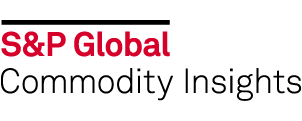
Download Report IHS CEH Report : Caprolactam (Chemical Economics Handbook 2019)
PDF by S&P Global Commodity Insights; IHS Markit
Information
Format: PDF Language: English Pages: 70 Publisher: S&P Global Commodity Insights; IHS Markit Publication Date of the Electronic Edition: 2019
?
ISBN: 121702
$49
Delivery time: Maximum 24 hours
Description
Caprolactam, produced primarily from cyclohexane, is consumed in the production of nylon 6 fibers and nylon 6 engineering resins and films. More than half of world caprolactam consumption is for nylon 6 fibers and more than one-fourth is for nylon 6 resins and films; the remainder is accounted for by trade in nylon 6 polymer chip. Nylon 6 fibers are used in the textile, carpet, and industrial yarn industries. Nylon resins are used as engineering plastics, with applications in the automotive industry, specialty film packaging for food, and wire and cabling. The gradual shifts in nylon 6 textile fiber production to Asia, followed by development in automobile, plastics, and electronics manufacturing away from more industrialized regions, have all contributed to historical growth for caprolactam and nylon 6 in Asia, and Chinese nylon fiber and resin production continues to expand rapidly. In 2018, China accounted for about half of the global consumption of caprolactam, and will continue to drive world consumption through the forecast period.
Caprolactam is the monomer intermediate used for production of nylon 6; consumption is driven primarily by the nylon fiber and polymer markets. Caprolactam is produced primarily from cyclohexane, but there are also other lesser-used commercial routes that utilize either phenol or cyclohexene as intermediates. In 2018, caprolactam production accounted for an estimated 46% of cyclohexane demand. Almost all caprolactam is used in the production of nylon 6.
Increasing capacity in China in recent years pushed down the global operating rate for caprolactam to a low of 80% in 2014, leading to the idling of capacity in South Korea, intermittent operation in Taiwan, and capacity reductions in other parts of the world, with Fibrant (formerly DSM) shutting down capacity in the United States in 2015–16 and BASF reducing capacity at its Ludwigshafen, Germany plant by 100,000 metric tons in 2017–18. The drop in oil prices since late 2014 has resulted in a lower raw material costs in Asia; as a result, CAPRO in South Korea restarted its second 60,000 metric ton-per-year line and CPDC in Taiwan returned its 100,000 metric ton-per-year line to full operation, both in 2016. China paints a very different picture from the rest of the world, as capacity has increased at double-digit rates for the last 15 years, and additional capacity is expected through the forecast period.
The Hengshen Group, BASF, and SINOPEC are the top three producers globally, comprising a collective share of 31.5% of the global capacity in 2018; Hengshen Group displaced BASF as the largest shareholder following its acquisition of Fibrant in October 2018. Global capacity for caprolactam is expected to reach around 8.8 million metric tons by 2023, up from the current level of 7.3 million metric tons, with China alone adding more than 1.5 million metric tons by 2023. The global operating rate was 84% in 2018, but is expected to fall to less than 78% in 2020 before recovering to 85% by 2023.
Global caprolactam consumption is expected to increase to approximately 7.5 million metric tons in 2023, for an average annual growth rate of 4.3% during 2018–23. Consumption of caprolactam was about 6.1 million metric tons in 2018, driven mainly by China. By 2023, China will represent nearly 60% of total global consumption, driven by the capacity additions for nylon 6 resins and fibers. Caprolactam consumption in the United States is expected to increase slightly over the next five years, while Western European consumption is expected to decline slightly.
China, once a significant importer of caprolactam, now suffers from overcapacity; this has caused regional imports to decline significantly. Global trade in caprolactam represented about 14% of consumption in 2018, down from more than 30% during 2001–12. Over the next five years, trade volumes are expected to continue to decline as China becomes more self-sufficient. Exports from the CIS and Baltic States and Western Europe are expected to decline slightly during the forecast period; nevertheless, these regions will continue to be the largest exporters globally.
$49
Delivery time: Maximum 24 hours
